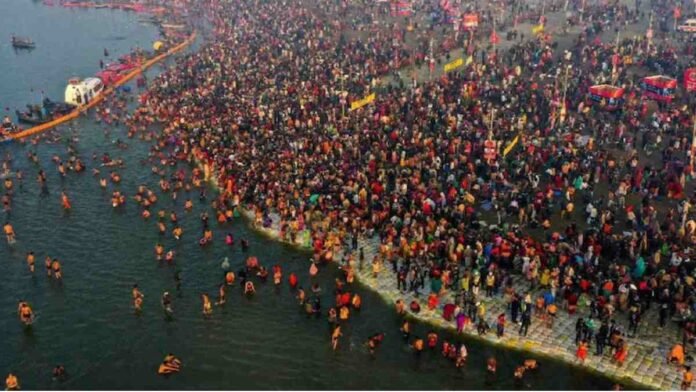Prayagraj, Uttar Pradesh, is the formal start of the Maha Kumbh Mela 2025. Millions of pilgrims, sadhus, and tourists from all over the world have been drawn to the Triveni Sangam—the holy confluence of the Ganga, Yamuna, and Saraswati rivers—by this legendary event, which is celebrated once every twelve years. A sacred bath in these waters is thought to cleanse the soul and wash away sins.
This year’s Mela is scheduled to attract an estimated 45 crore guests over 45 days, beginning with the Paush Purnima Snan and ending on February 26, 2025, which coincides with Maha Shivratri. According to sources, on the Sunday before the Sangam officially started, about 50 lakh devotees took a holy bath, setting the stage for an incredible turnout before it ever began.
Major highlights and snans schedule
Five important snan (holy baths) are held to commemorate the occasion. The Maha Kumbh Mela’s five major snans will begin with the first on Paush Purnima (Monday). Three important ceremonies, known as Shahi or Amrit Snan, will then take place on Makar Sankranti (Tuesday, January 14), Mauni Amavasya (January 29), and Basant Panchami (February 3). Maha Shivratri (February 26) and Magh Purnima (February 12) will mark the final two significant snan.
Enhanced crowd control and security
The Uttar Pradesh government has implemented cutting-edge security measures to guarantee public safety and security because this Mela draws millions of tourists. More than 2,750 CCTV cameras, 268 AI-powered systems, and drones have reportedly been erected to monitor crowd movement. Additionally, 700 designated boats equipped with life-saving buoys have been placed along the riverbanks to guarantee safety.
To counter online threats, IIT Kanpur experts have been asked to improve cyber security and crowd control. Kumbh Sah’AI’yak is a chatbot driven by AI that provides guidance and information in real-time. A QR-based pass management system and connection with Google Maps make navigation easier for visitors.
Innovations in technology
The digital Kumbh In keeping with the idea of “Digital Kumbh,” the government has also made nine smartphone apps available to make sure pilgrims can access assistance when they need it. With the aid of these devices, they will receive all safety alerts, event scheduling, and route planning. Additionally, the administration will be able to predict crowds at key areas, such as rail stations, with the aid of real-time surveillance.
Highlights of the ceremony and culture This event is unquestionably a must-see because of its ceremonial and cultural attractions. Thirteen Akharas have made a spectacular entrance this year, giving the Mela a more spiritual feel. On significant snan days, the Horticulture Department would use more than 20 quintals of roses scattered across 4,000 hectares to shower devotees with rose petals in a first.
Millions of people have arrived here, including well-known individuals like Laurene Powell Jobs, the wife of Steve Jobs and a co-founder of Apple. This suggests that pilgrims, tourists, and dignitaries from all over the world are drawn to the Maha Kumbh Mela, which is becoming an increasingly popular cultural and spiritual event on a global scale.



